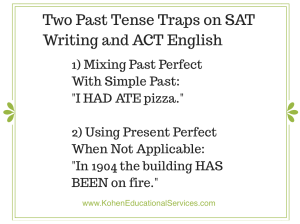If you want to improve your SAT or ACT Reading score, the first thing you should be doing is taking official, timed practice tests and carefully reviewing your mistakes. If you’re taking the SAT, you should also be studying vocabulary. While these are the most important things you can do to improve your score, alongside learning important test-specific strategies, they’re not the only things you can do.
Reading sophisticated prose that doesn’t appear on the SAT or ACT can also help you improve your score. Because these exams test your ability to read prose actively and critically, you can hone these skills by practicing better reading more generally. The more you read, in fact, the better equipped you’ll be for SAT and ACT Reading—not just because you’ll become a better reader, but because you’ll expand your knowledge base.
If you glance at a couple of SAT and ACT passages, you’ll quickly realize that they tackle an incredibly wide range of topics. Many of these, like choreography, astronomy and urban planning, may be relatively new to you. The more widely and often you read outside of these exams, however, the better equipped you’ll be to handle these passages because of the broad background knowledge you’ll acquire. It’s always easier to tackle a passage that discusses something you already know about than a passage about a completely foreign topic.
Try to read prose of a relatively high caliber. Look for writing with advanced vocabulary, complex ideas and nuanced writing—the same attributes that appear on SAT and ACT passages.
You can find quality non-fiction passages in publications like The New York Times, The New Yorker, The Wall Street Journal, The Economist and The New York Review of Books. Opinion pieces are especially helpful because so many of the exam passages are opinion oriented. You can find these in the opinion section (also called the “op-ed” or “editorial” section) of news and media outlets.
If you’re a sports fan, you can also find high caliber prose about athletics. New York Magazine often features very well written and thoughtful articles about all the major sports.
Articles about science are also important to read because these always show up on the test. What’s more, SAT and ACT science passages are often about topics that aren’t covered in high school courses, such as astronomy or epidemiology. If you can familiarize yourself with some of these topics before taking the test, you’ll be in better shape when given these passages.
The more articles you read about science, the more your scientific literacy will improve and the more comfortable you’ll become with this sort of material. Scientific American is a great source of in-depth and complex articles about science, and its articles have actually appeared on the SAT before!
Don’t forget to practice reading fiction, especially if you find it difficult. Look for literary novels you find appealing. You can always ask your English teacher for good suggestions. If you’re preparing for the SAT, consider reading a 19th-century British novel, as passages from these works have shown up with some frequency on the exam. If you’re studying for the ACT, look for a well-written memoir, as memoir-like passages show up frequently on the test.
No matter what you’re reading, look up any vocabulary words you don’t know. This can even help you on the ACT, where vocabulary isn’t explicitly tested, because advanced vocabulary can still appear within a passage.
As you read, practice reading actively, just like you would on the test. Take time to parse difficulty chunks of text to figure out what’s actually going on. Ask yourself the main point of everything you read. When is the author stating her own opinion and when is she just stating information? What is the author’s tone? What stylistic choices does the author make and why? Why did the author write this? How is the passage organized, what are the major sections, and how do the individual pieces relate to the whole?
The more you practice answering these questions, the better you’ll get at them, and the better your SAT and ACT scores will get too.




